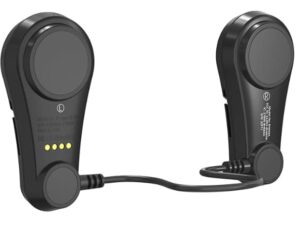I read somewhere in a hilarious meme featuring Kevin, the minion. It read, “Friday is my second favourite word starting with an F. My first favourite is Food.” And it stuck me with the lightning speed, that it is true for most of the population in the world.
What if you are passionate about making food as much as you enjoy tingling your tastebuds with a sweet Taste of Purple wine after decanting it for aeration into a glass. Starting a blog all about food may be a good way to converge your love into something that can make your identity. So, if you enjoy being in the kitchen, you can start a blog of your own with a little guidance.
Cooking food may be good for you and you might be interested in sharing your secrets and twirl to the recipes. It may make you feel all worked up in the beginning, but you will do just fine if you take it step by step. Therefore, we have collated all that you need to know in these simple steps.
Step 1. On what niche will you be posting?
There are 600 million blogs on the internet and they are growing as you read. To avoid getting lost in the swarm, identify a specific niche that you identify yourself with. A broad food blog is hard to increase the outreach as it will face much larger competition.
How to find what niche would you prefer?
Do a little research and you can also join a small course to brush up on your skills and identify your niche. For instance, food assisting certain lifestyles such as vegan foods are becoming extremely popular nowadays. Other than that, fitness freaks are fishing the web for paleo, keto and low carb diets. While it is good to go for recipes that you think are good to share, you can always have a section or limited feature recipes on trending topics.
Types of food blogs
You can identify your niche as you grow. Meanwhile, you can start with any of these types of food blogs. The classification will help you to optimise your blog with the right keywords for branding and marketing. You can choose from:
- A blog featuring recipes for people who cook their food, health-conscious people, quick recipes, low-calorie recipes.
- A cuisine with few ingredients that taste good.
- Trending niches like food that supports vegan, gluten-free, paleo and weight loss diet.
- Blog for reviewing recipes of other sommeliers or selected recipes from other blogs.
- Traditional cuisine blog featuring different demographics such as Indian, Japanese, Chinese, French, Italian, etc.
- Alcohol and brews tasting blog
Step 2. Choose your CMS
You need not know how to code to start your blog. You can use any Content Management System to manage your website. For beginners, you may use WordPress which is the most preferred CMS across the world. W3Techs found its market share for 63.5%. Its user interface is easy to access and most of the templates that it offers are free of cost.
Step 3. Domain name selection
You should choose a short and attractive domain name for your blog. It should also be easy to spell and remember. Anything too flashy can ruin your blog’s perspective of getting a decent rank at SERP. It should be singular and easy to pronounce. It should be relevant to your niche.
Step 4. Chose a web hosting service provider
A domain is like an address and a web hosting provider is a place where your blog will live online. Whatever you upload will be saved on their server and they will provide it when crawlers ask for it. it keeps your blog connected to WWW.
Step 5. Select how will your website appear
Do some primary research on how to build a website from a graphic designer’s perspective. Learn about the basics of UX and UI. You may also do a short course to save time. The landing page of your website should appeal to the visual senses. Do not include too much text on the landing page. Make your recipes come with good pictures. You may also add links for videos. Embedding videos on the landing page may make it slow.
You may also add plugins for increasing the visibility of your site and making it optimised for SEO. It will also decrease the loading time.
Step 6. Easy to understand the content
Try to break your recipe into steps. Add a photo of ingredients or spices for identification. They may be called with a different name in other parts of the world. Be consistent in your posts and give a sneak peek of your next recipe or post in the previous one in form of a quiz to pique the curiosity of the reader.
Make a calendar for posting such as you may post every week. Consistency will reflect how passionate you are about your blog.
Best of luck while following your passion. We hope this guide will give you a head start in chasing your dream.







